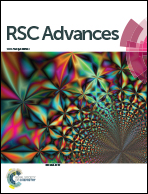Pyrrolidine and piperidine based chiral spiro and fused scaffolds via build/couple/pair approach†
Abstract
A versatile stereoselective diversity oriented synthetic pathway to the possible spiro and fused diverse heterocyclic small molecules is described. The strategy involved the “build–couple–pair” approach involving an SNAr, Michael addition and Mannich reaction on chiral acyl bicyclic lactams 2a/b, followed by a cyclization onto the inbuilt scaffold electrophile, thereby leading to asymmetric fused and spirocyclic nitrogen heterocycles. A “post-pair” phase has been incorporated to generate more polar compounds. We used Principal Component Analysis (PCA) and polar moment of inertia to evaluate the shape-space diversity of our scaffolds with respect to a commercial database and observed extraordinary diversity within the scaffold network. We further calculated the polar surface area (PSA) of our molecules which is an indicator for drug cell permeability.


 Please wait while we load your content...
Please wait while we load your content...